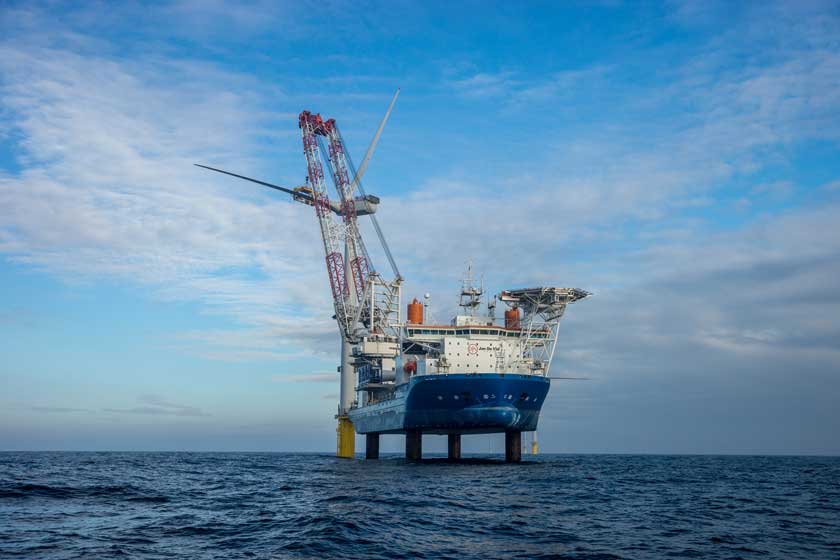Drops prevention best practice in Malaysia and beyond: A Q&A with Jonathan Chia, Business Development Manager, Daya Singa
As momentum in Drops prevention in South East Asia continues to build, the O&G industry is continuing to operate at the forefront of safety best practice. We sat down with Jonathan from Daya Singa, our Malaysia distributor, to discuss the latest trends in Drops prevention in the region and why it’s critical to effectively prioritise health and safety initiatives.
Jonathan, could you start by telling us a bit about yourself and your career?
I’m Business Development Director for Daya Singa, a company that has been in the safety industry since 1986. I joined Daya Singa in 2007, focusing on sales and marketing. I now take care of daily business operations and handle some new contracts as well. At Daya Singa our main market is Malaysia, but also Brunei and the Philippines – so my career’s been an interesting journey through O&G!
Is there a strong awareness of Drops in the SE Asian region?
Quite strong, yes – especially on the exploration side. Drilling rigs have long led the adoption of Drops prevention solutions because the work is naturally hazardous, involving working at height, impacts, and other threats to asset integrity. More incidents in the past have led to more lessons learned.
We’ve also seen strong interest in Falling Object safety from the production side, as offshore platforms look to maintain the highest safety standards.
How has Drops prevention changed in the last decade in SE Asia?
Ten years ago, the knowledge was more basic – using the correct bags to carry tools, using the right belts. Now, Drops prevention in the region is advanced, following and even shaping best practice in areas such as how to protect from falling objects bolted overhead.
There is always, of course, room to improve. Safety culture is forever moving forward, and there’s no way to solve all challenges in a short period. That’s why Drops prevention has to be practical – you can’t, and shouldn’t, do everything at once.
Some clients need more convincing, which is why we are reaching out to other industries outside O&G to ensure that Drops prevention best practice is embedded as widely as possible.
Has Covid-19 and the related industry volatility affected attitudes to HSE in South East Asian O&G?
Falling Objects safety is paramount for a lot of oil companies – there’s no question, for them, of cutting back or putting cost ahead of safety. The industry is increasingly procuring advanced solutions at the best long-term cost. It’s important not to goldplate safety – at its core, Drops prevention must be affordable and practical.
Can engineered solutions ever replace a culture of awareness?
You can never replace holistic awareness of Drops risks. Drops are one of the main contributors to injuries and asset damage at sites in O&G – personnel in the field know this. That’s why the industry has taken steps to share Drops incident details, including near misses. This allows key learnings to cascade down to the safety managers and working teams, constantly updating best practice.
Operators and national companies in South East Asia take safety very seriously and encourage intervention in safety. There’s no penalty for speaking out, and concerns are taken seriously no matter what level the personnel involved work at. This helps to identify risks and breaks down barriers to communication between different tiers of the organisation.
How did Daya Singa’s relationship with Dropsafe develop?
We first came across Dropsafe in 2017. It quickly became apparent that our two companies shared core values of safety, innovation and adaptability, helping to cement the relationship early on. Dropsafe, as a Hong Kong based company, have been working in South East Asia for quite some time and have a deep knowledge of the market.
There were enquiries coming in very soon after that from interested firms in Malaysia. The exploration and production side of the industry in particular is strongly in tune with Drops prevention best practice. Firms reached out to learn more about procuring best practice solutions – the right equipment for the right application.
What are your top three steps for firms looking to establish a best practice Drops prevention programme?
- Number one: consider the value of your assets
As cost considerations come to the fore, it’s important not to lose sight of a crucial fact – the cost of Drops prevention solutions is significantly less than the assets being protected. Recently, during a conversation with a safety manager, they put it very powerfully: if safety appears expensive, try having an incident.
Once an incident has happened, there’s no fixing it. Prevention is more important – in the long run, a solid Drops prevention programme pays for itself.
- Number two: Prioritise and be practical
It’s vital to identify the key risks on a platform or facility first. Heavy traffic areas, important assets – as part of a long-term Drops prevention programme, these should be the very first areas to be protected.
It’s also best practice to consider the ongoing costs of your solutions. When does a product need replacing? What maintenance is required? Is the chosen product robust enough for years of operation in a hot and humid climate?
The most advanced products stand out because they are able to withstand the demands of operation without needing extensive repairs, replacements and maintenance over a decade long lifecycle.
- Number three: Drops education
Using stark examples, such as outlining the impact of dropping a wrench 50m and having it strike a worker on the head, can help to make the importance of Drops prevention understood.
Ultimately, this helps the organisation – a cohesive safety culture starts with the people in the field, spreading a holistic approach to Drops prevention throughout all levels of a firm.
